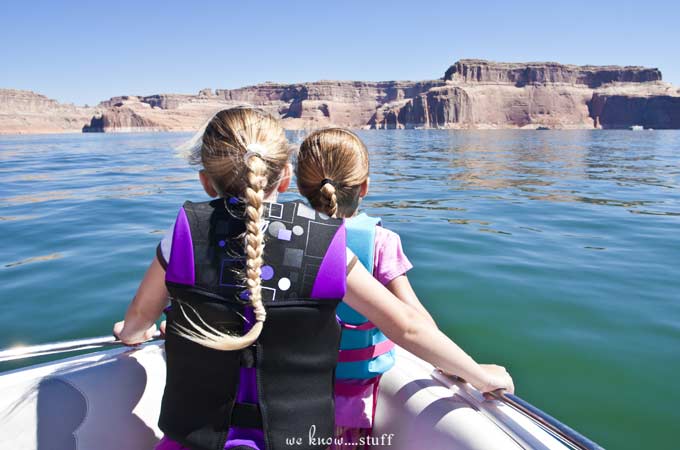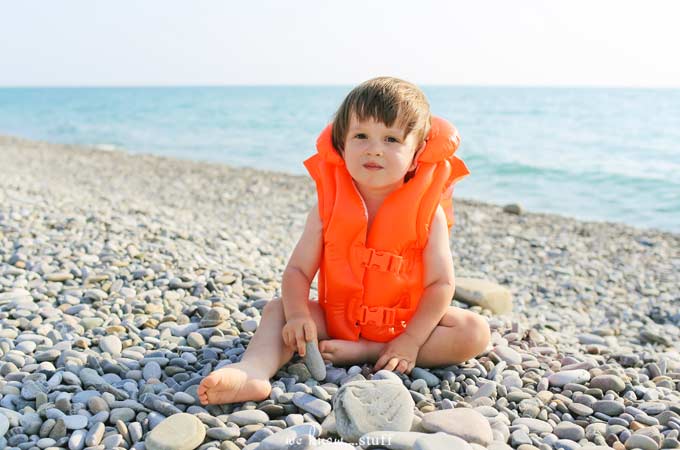In 2015 between Memorial Day and Labor Day 209 children drowned in swimming pools and 76 in lakes. Read these 6 Water Safety Tips For Kids from the USSSA.

Once upon a time ago, I was a little kid. I know. Can you believe it? Well, I was and I didn’t know how to swim.
I know. Can you believe it? Well, I was and I didn’t know how to swim.
If you hear the story from my sister, I was being an annoying little turd to my older cousin. I had this dopey little, rubber, squirt toy. I think it might have been a chipmunk or something. Anyways, my older cousin was sunbathing on my parent’s deck and I decided to squirt him.
He got really pissed at me – as all cousins do with one another from time to time – and shoved me into the pool. He was too young to know that I didn’t know how to “really” swim and ran into the house to tell my Mom on me.

Unfortunately, I sank like a stone. Right to the very bottom. I kind of remember feeling surprised, but I don’t remember trying to swim.
Luckily, my sister was there. God was too. (Yep, we’re the praying kind.) And with his guidance and her smarts, she strapped on her life jacket and jumped into the pool to save me.
I know it sounds crazy, but this is a 100% true story. My little sister swam over to me and pulled me up out of the water by my long brown hair. She pulled and pulled until she got a hold of me and then pulled my face right up out of the water.
She saved me. Plain and simple.
At some point, my Mom came flying out the back door of the house and up on to the deck. But, without my sister’s help, it would have been too late. You see, all of this probably happened in 2-3 minutes top. But that is more than enough time for a child to drown.
Now, before you start being mad at our Mom, this was back in the day when kids roamed free on their bikes for hours and only came home for supper. This was back in the day when Dads tossed their kids into the pool without life jackets just to “see if they could swim.” They weren’t bad parents. They were actually amazing parents.
But with that said, “Every summer the number of drowning incidents involving children skyrockets,” according to Sue Mackie, Executive Director, United States Swim School Association. She goes on to say that, “In 2015 between Memorial Day and Labor Day there were 209 children who drowned in swimming pools, another 76 in lakes, and those are just the incidents that were reported by the local media.”
Yikes! So we felt that it was imperative that we share some of the USSSA‘s advice with all of you. Seriously. Read it.
6 Water Safety Tips For Kids
1.) Pool floats and water wings are not the same as life jackets.
One common mistake that many parents make that can lead to a drowning incident is allowing young children to use pool floats and wear water wings in the pool. While life jackets are designed to save a child from drowning and should always be worn near open bodies of water like lakes or the ocean, flotation devices and wings can slip out of a child’s grasp or fall off and give a false sense of safety. Goggles are another widely sold pool accessory that parents should avoid with their children.
2.) Have a pool routine.
Never allow your baby/toddler in the pool without a swim diaper, and create a process the child must go through before entering a pool such as putting on the diaper, a swimsuit and applying sunscreen. Having a pool routine will teach your child that the pool cannot simply be jumped into at anytime and it can help reduce the chances that your child might be tempted to try to go swimming without you being aware.
3.) Teach your children to ASK permission before entering the water.
When you are at the pool do not allow your child to be the one to decide when to enter the water. Create a verbal cue for your child that must be given by you before he or she can enter the pool. This creates an additional barrier of entry for your child if used consistently. He or she will learn that jumping into the pool requires permission first. If your child has a hard time following directions, consider getting a wearable safety alarm with a wristband for your child; it emits a loud alarm when submerged in water.
4.) Teach your kids how to swim!
Never use floatation devices or water wings when teaching kids to swim. This can create a false sense of security around water. Instead, teach children how to locate, swim to and then climb hand-over-hand along the pool wall to a step or ladder where a safe exit can be made from the pool.
5.) Don’t rely on goggles.
Don’t always use goggles with your kids in the pool. Teach them to open their eyes under the water so if they fall in they can open their eyes and find the side or a step and leave the pool safely.
6.) Don’t panic.
Do not panic and transfer feelings of fear to your child if his or face dips below the surface of the pool. For very young children practice having them put their entire face under water in the bathtub and blow bubbles to build their comfort with water.
Additionally, the USSSA also recommends that parents adhere to several standard water safety precautions including: keeping children under constant supervision, enrolling children in swimming lessons, knowing CPR, having pool fences and barriers installed.
We hope you learned as much as we did. Do you have any tips to share with us about water safety?
Have fun, but be safe,
Denine & Daniele
P.S. To find a USSSA affiliated swim school near you, or for details on becoming a member of the nation’s leading swim school organization visit: http://www.usswimschools.org
Thanks for sharing these tips! I am a huge advocate for swimming lessons. We do them every year with our children so they can be strong swimmers now through adulthood. There is so much joy I get from the water, I want them to enjoy it too.
Thanks for stopping by Kati. We live on an “island,” so water safety is of utmost importance to us!